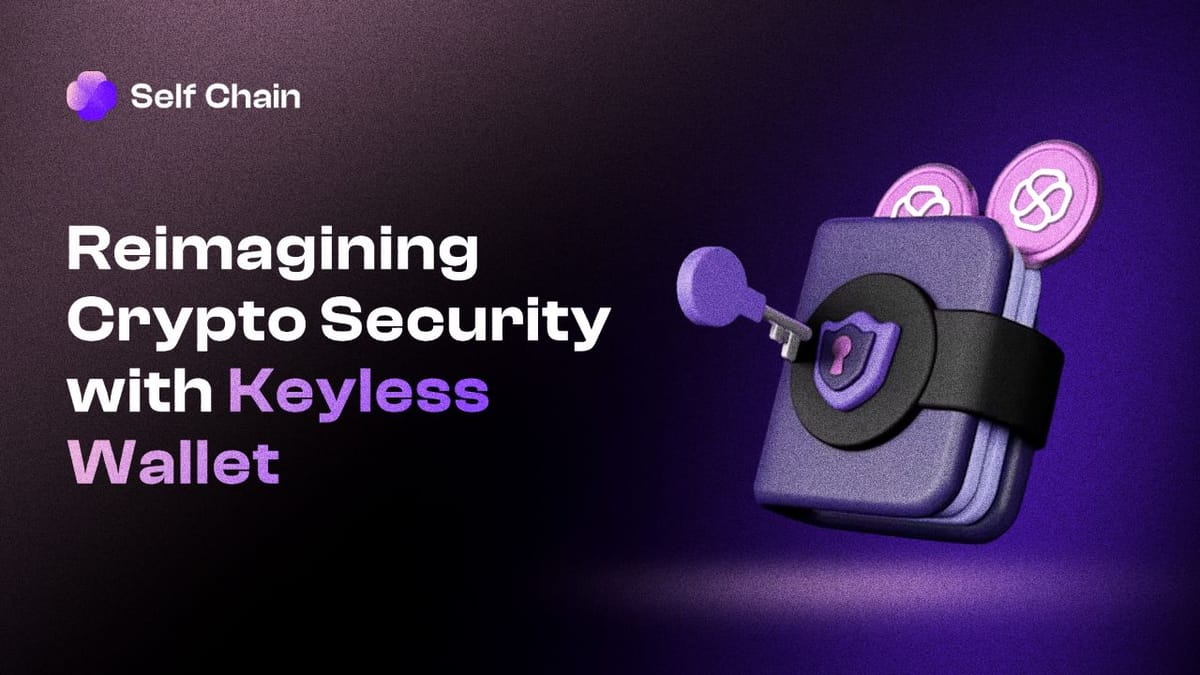How Self Chain's Keyless Wallet Redefines Crypto Security

Managing a cryptocurrency wallet comes with its fair share of risks. Losing access to your funds because of a misplaced private key, a phishing scam, or a malware attack is a nightmare scenario faced by many users.
The statistics speak volumes:
- An estimated 20% of all Bitcoin is permanently lost due to misplaced or forgotten private keys.
- Phishing scams and malware attacks target users worldwide, compromising wallets daily.
- Even minor errors in managing seed phrases or private keys can result in irreversible losses.
Despite the incredible potential of cryptocurrencies, traditional wallet designs still place a heavy burden on users, exposing them to significant vulnerabilities.
Rethinking Wallet Security
Most wallets rely on users to safeguard private keys or seed phrases, which introduces several risks:
- Single Point of Failure: If a single private key is compromised or lost, the entire wallet is exposed.
- User Responsibility: Managing cryptographic information demands near-perfect vigilance, leaving users prone to errors.
- Limited Recovery Options: Traditional recovery mechanisms often rely on insecure or cumbersome methods, like storing seed phrases.
Given these challenges, the need for a secure, user-friendly solution is clear.
The Solution: Self Chain’s Keyless Wallet
Self Chain’s innovative keyless wallet approach eliminates the need for users to directly manage private keys. Instead, advanced cryptographic techniques like Multi-Party Computation (MPC) and Threshold Signature Scheme (TSS) ensure robust security while maintaining accessibility.
How It Works
- Multi-Party Computation (MPC):
- MPC divides the private key into cryptographic shares, distributing these across multiple secure systems.
- These shares collectively perform cryptographic operations without ever reconstructing the private key in its entirety.
- Even if one share is compromised, the remaining shares safeguard the wallet’s integrity.
- Threshold Signature Scheme (TSS):
- TSS builds on MPC by enabling a subset of the shares to sign transactions without recreating the full private key.
- This ensures that cryptographic operations remain secure and operational even if some shares become unavailable.
Together, MPC and TSS redefine wallet security, protecting users against traditional threats while offering enhanced reliability.
How Self Chain Mitigates Wallet Security Threats
1. Eliminating Single Points of Failure
By decentralizing cryptographic operations, Self Chain ensures that no single compromised component can expose the wallet. This approach effectively reduces the risk of catastrophic breaches.
2. Neutralizing Phishing and Malware
Without a single private key or seed phrase for attackers to target, phishing scams and malware lose their effectiveness. Self Chain’s design ensures that even sophisticated threats fail to breach user wallets.
3. Seamless Recovery Mechanisms
Traditional wallets rely on seed phrases for recovery, which can be difficult to manage securely. Self Chain’s system uses innovative recovery mechanisms like verifiable secret sharing or trusted recovery agents, eliminating the need for cumbersome seed phrases.
4. Adaptability with Dynamic Thresholds
Self Chain’s TSS allows for dynamic adjustments, enabling users to change the threshold for cryptographic operations as their needs evolve. This ensures that wallets remain secure, even in changing environments.
5. Transparent and Auditable Security
The cryptographic processes underlying Self Chain’s keyless wallet are open and auditable, allowing users and developers to verify their integrity. This transparency builds trust and confidence in the system.
Conclusion
The future of cryptocurrency security lies in solutions that combine simplicity with advanced technology. Self Chain’s keyless wallet represents a bold step forward, eliminating traditional pain points and empowering users with a secure, user-friendly experience.
As blockchain adoption grows, innovations like Self Chain’s keyless wallet are crucial for ensuring that security keeps pace with usability.
About Self Chain
Self Chain is the first Modular Intent-Centric Access Layer1 blockchain and keyless wallet infrastructure service using MPC-TSS/AA for multi-chain Web3 access. The innovative system simplifies the user experience with its intent-focused approach, using LLM to interpret user intent and discover the most efficient paths.
Self Chain ensures that onboarding and recovery are effortless with keyless wallets that grant users complete self-custody over their assets. In addition, it provides automated rewards to dApps when they efficiently resolve user intent, further enhancing the user experience. Moreover, Self Chain incorporates Account Abstraction with MPC-TSS to provide secure signing and reduce transaction fees. It's a platform that redefines blockchain interaction, making it more secure and user-friendly for everyone.
